
- 1- Introduction to Spanish Cheeses
- 2- Types of Spanish Cheeses
- 3- Most Popular Spanish Cheeses and Their Uses
- 4- How to Pair Spanish Cheeses
- 5- Using Spanish Cheeses in Recipes
- 6- Where to Buy Authentic Spanish Cheeses
Introduction to Spanish Cheeses
Spain is known for its rich culinary traditions, and its variety of cheeses is no exception. Spanish cheeses are diverse, ranging from mild and creamy to tangy and strong, and they each have a unique place in Spain’s food culture. Whether you’re a cheese lover or new to Spanish cuisine, there’s something for everyone. In this guide, we’ll explore the most popular Spanish cheeses, their distinct characteristics, and how you can use them to elevate your dishes.
Types of Spanish Cheeses
Spanish cheeses can be categorized based on their texture, milk source, and aging process. Some of the most common types of Spanish cheeses include:
1. Fresh Cheeses
These cheeses are soft, creamy, and mild in flavor. They are typically not aged, which gives them their smooth texture. An example of a fresh cheese is Queso Fresco, a soft cheese often used in salads and as a topping for dishes like tacos.
2. Semi-Cured Cheeses
Semi-cured cheeses have been aged for a shorter period, giving them a firmer texture and a more developed flavor without being too intense. Manchego, one of Spain’s most famous cheeses, is often found in this category.
3. Cured Cheeses
Cured cheeses are aged for a longer time, which results in a stronger flavor and a drier texture. These cheeses are perfect for serving on cheese platters or pairing with wines. Cabrales, a blue cheese from Asturias, is a prime example of a cured cheese.
Most Popular Spanish Cheeses and Their Uses
Spain is home to an array of delicious cheeses. Here are some of the most popular Spanish cheeses that you should try:
1. Manchego
One of the most well-known Spanish cheeses, Manchego comes from the La Mancha region and is made from sheep's milk. This semi-cured cheese has a firm texture and a nutty, slightly tangy flavor. It’s perfect for slicing and serving with olives, fruits, or wine. Manchego is often used in tapas and as an ingredient in Spanish sandwiches, like the classic “bocadillo de Manchego.”
2. Cabrales
Cabrales is a blue cheese from Asturias, known for its bold and pungent flavor. Made from a blend of cow’s, sheep’s, and goat’s milk, it’s aged in caves, which gives it a strong, earthy aroma. Cabrales is best enjoyed with crusty bread, red wine, or even in sauces for meats and stews.
3. Idiazabal
Idiazabal is a smoked cheese from the Basque Country, made from sheep’s milk. It has a firm texture and a rich, smoky flavor. It’s often served sliced on its own, in salads, or paired with nuts and dried fruits.
4. Queso de Cabra (Goat Cheese)
Queso de Cabra refers to a wide variety of goat cheeses from different regions of Spain. These cheeses can be fresh or aged, and their flavors can range from tangy to creamy. They are often used in salads, tapas, or as a topping for grilled vegetables.
5. Tetilla
Tetilla is a soft, creamy cheese from Galicia. Its mild, buttery flavor makes it versatile for various dishes. Tetilla is typically served as part of a cheese board, melted over potatoes, or in Spanish omelets (tortilla española).
How to Pair Spanish Cheeses
Pairing Spanish cheeses with the right wines, fruits, and other foods can enhance their flavors and provide a delightful tasting experience. Here are some tips for pairing:
1. Wines
Manchego pairs beautifully with a dry red wine like Rioja, while Cabrales is best enjoyed with a robust red or even a sweet wine like Pedro Ximénez sherry. For softer cheeses like Tetilla, try a white wine like Albariño.
2. Fruits and Nuts
Pair cheeses like Idiazabal or Queso de Cabra with fresh fruits like figs, grapes, or apples. Nuts such as almonds, walnuts, or hazelnuts complement the texture of many Spanish cheeses as well.
3. Tapas
Cheese is often served as part of tapas in Spain. Manchego and Tetilla are great additions to any tapas platter, especially when paired with chorizo, olives, and crusty bread.
Using Spanish Cheeses in Recipes
Spanish cheeses can be incorporated into a wide range of recipes, adding flavor and richness to your dishes. Here are some ideas:
1. Spanish Omelet (Tortilla Española)
One of Spain’s most iconic dishes, the tortilla española, is often made with eggs, potatoes, and onions. You can add a bit of Manchego or Tetilla cheese for extra creaminess and flavor.
2. Cheese-Stuffed Peppers
Stuffing peppers with a mixture of Cabrales cheese and other ingredients like rice, garlic, and herbs makes for a delicious and savory dish that highlights the sharpness of blue cheese.
3. Spanish Cheese Croquettes
These crispy, creamy bites often feature Manchego or Idiazabal, offering a rich, savory snack that’s perfect for sharing at a party or as a tapas dish.
Where to Buy Authentic Spanish Cheeses
If you’re looking for authentic Spanish cheeses, be sure to visit specialty stores or local markets that carry imported goods. You can also explore online shops like Rubi Spanish Table, which offers a curated selection of the best Spanish cheeses and other gourmet products. Whether you’re a first-time buyer or a seasoned cheese lover, finding quality Spanish cheese is easy when you know where to look.
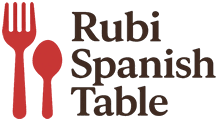






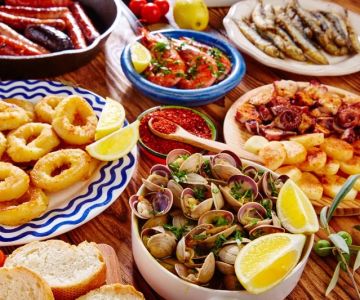

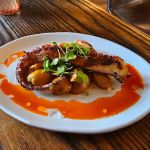 Coqueta4.0 (2719 reviews)
Coqueta4.0 (2719 reviews) Doña Mina4.0 (24 reviews)
Doña Mina4.0 (24 reviews) El Quijote4.0 (551 reviews)
El Quijote4.0 (551 reviews) Costa Brava4.0 (1736 reviews)
Costa Brava4.0 (1736 reviews)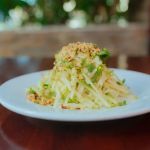 Firefly* Tapas Kitchen & Bar4.0 (4720 reviews)
Firefly* Tapas Kitchen & Bar4.0 (4720 reviews)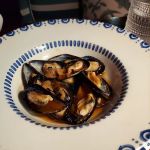 Del Mar4.0 (2377 reviews)
Del Mar4.0 (2377 reviews) The Best Spanish Restaurants in Charlotte for Tapas and Paella Nights
The Best Spanish Restaurants in Charlotte for Tapas and Paella Nights The Best Spanish Restaurants in Tampa for Tapas, Paella, and Mediterranean Cuisine
The Best Spanish Restaurants in Tampa for Tapas, Paella, and Mediterranean Cuisine How to Make Spanish Tarta de Nuez, Almendra y Chocolate | Nut, Almond, and Chocolate Cake
How to Make Spanish Tarta de Nuez, Almendra y Chocolate | Nut, Almond, and Chocolate Cake The Best Spanish Restaurants in Houston for Tapas and Wine Nights
The Best Spanish Restaurants in Houston for Tapas and Wine Nights Exploring the Best Spanish Food Markets in the US
Exploring the Best Spanish Food Markets in the US Discover the History of Spanish Tapas and Their Evolution | Rubi Spanish Table
Discover the History of Spanish Tapas and Their Evolution | Rubi Spanish Table